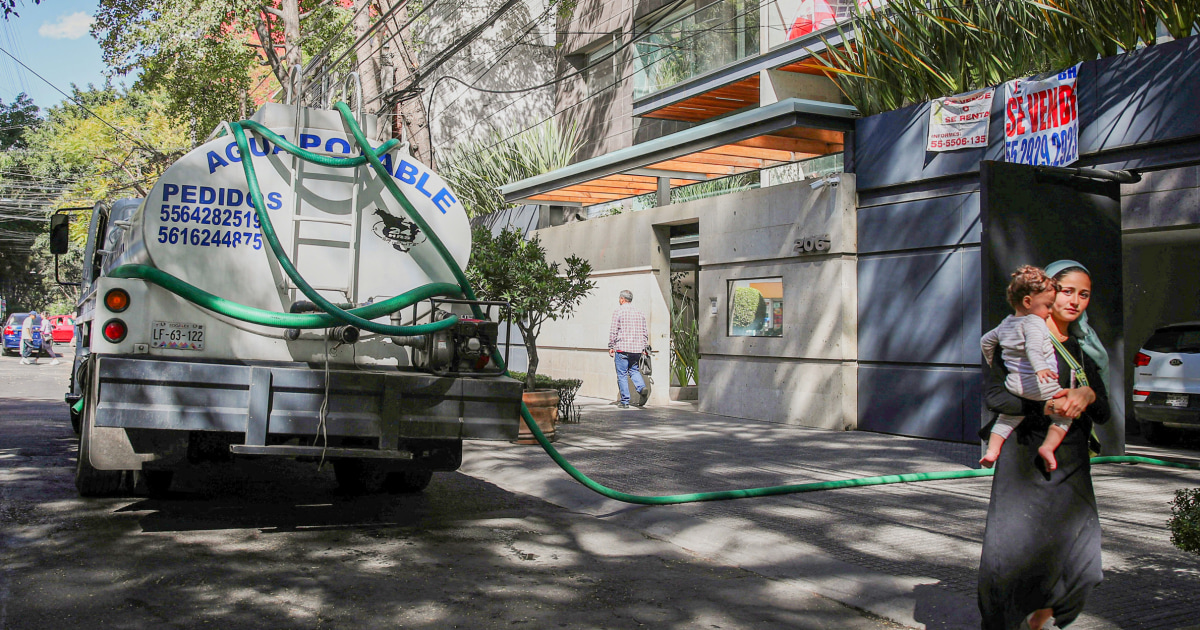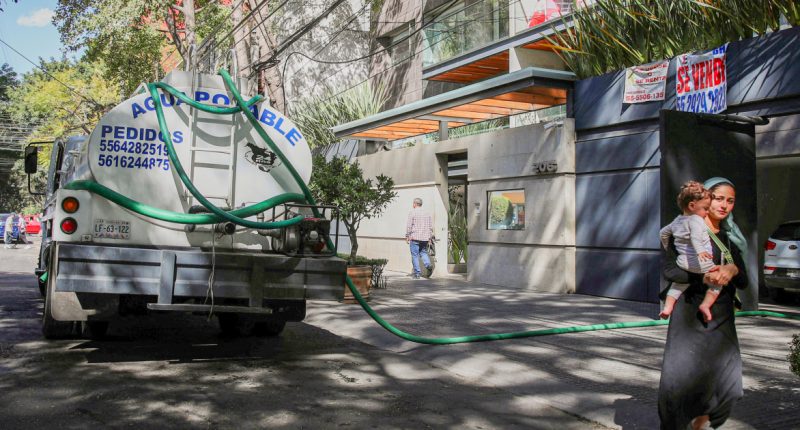
The region’s complicated relationship with water is as old as the city itself. Mexico City sits atop a high-altitude former lake bed that was drained in the 16th century after the Spanish conquered the area.
As a result, the city’s main source of water comes from pumping underground aquifers and channeling a network of canals, dams and reservoirs that make up the Cutzamala System.
Roughly 70% of water in Mexico City is pumped from underground, while the Cutzamala System supplies the other 30% to the Mexico City metropolitan area and the nearby Toluca Valley, Solano-Rojas said.
But underground aquifers are becoming stressed as the city rapidly expands, and years of overuse are causing the ground to sink, a process known as subsidence.
A 2021 study co-authored by Solano-Rojas and published in the journal JGR Solid Earth found that groundwater extraction has caused the city to sink at a rate of about 20 inches per year since 1950.
“The city has been growing a lot,” he said. “We have other sources of water but we still get water from underground, so subsidence continues and it’s a problem that hasn’t stopped ever since the construction of the big pyramids in the pre-Hispanic history of the city.”
Local infrastructure has also not kept pace with how quickly Mexico City is expanding, Solano-Rojas said, adding that authorities have been scrambling to repair leaks and replace aging pipes to bolster the region’s water system.
All of these issues are major challenges on their own, but Solano-Rojas said climate change is compounding the water crisis because the region has been suffering from ongoing drought conditions.
The country as a whole has been warmer and drier than normal, according to a recent report from Mexico’s National Water Commission (Conagua). The agency found that last month was the warmest January on record, with average temperatures 1.26 degrees Fahrenheit warmer than normal for the month.
Warmer temperatures and less precipitation across central Mexico mean fewer chances to replenish the aquifers and dams that feed the Cutzamala System.
“In Mexico City, we are not ready to respond as quickly as the drought is producing problems,” Solano-Rojas said.
All these stresses combined make it difficult for the city to provide enough water for human consumption, industrial activities and agriculture.
Many neighborhoods are feeling the brunt of the shortage.
“In the case of Iztapalapa, water scarcity has always been a big problem,” said Mariano Salazar, a 69-year-old community leader in the district. “There are almost 2 million of us in this municipality and we require 100 million cubic meters of water a year.”
Frustrations over the situation have fueled unrest. Last month, protesters in the municipality of Acambay forced open the gate of an office of Mexico’s National Water Commission and broke windows, as reported by Reuters.
Local authorities have urged residents to conserve water and prioritize what is available for drinking, particularly as temperatures this week hover around 85 degrees Fahrenheit.
For many like Hernández Villa in Iztapalapa, the shortage has forced major sacrifices on a daily basis.
“We try to wash our clothes as little as possible, we don’t use the shower anymore,” she said. “We have to leave the water in containers and bathe in jars to try to save as much as possible. We want the little water we manage to collect to last a little longer.”
Denise Chow reported from New York City and Albinson Linares from Mexico City.
Source: | This article originally belongs to Nbcnews.com










